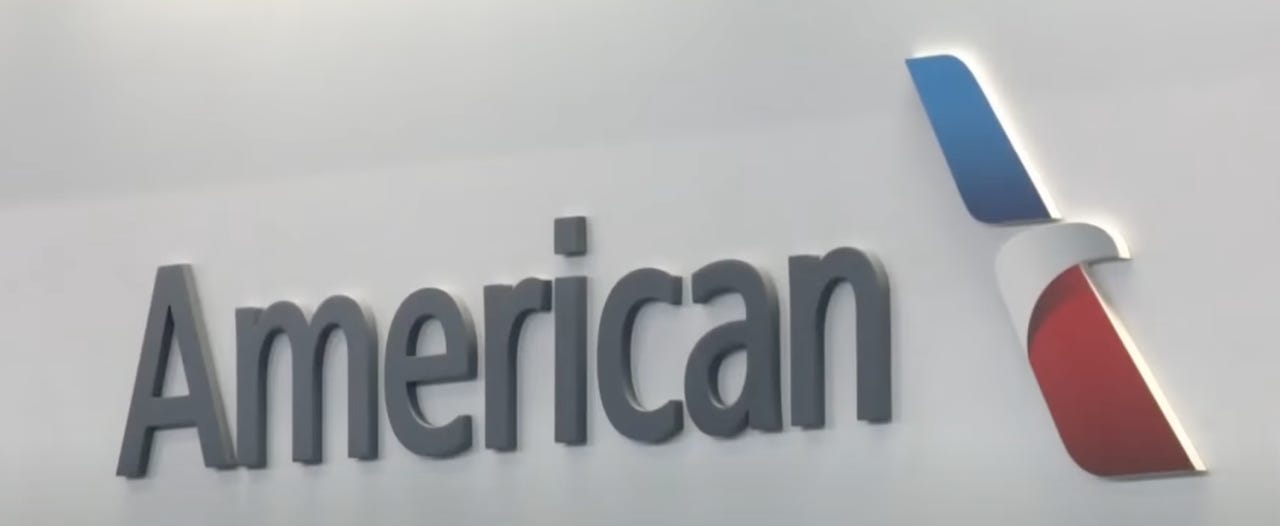American Airlines has a special way of dealing with angry customers

Don't worry. Don't be angry. You'll be happy.
There's a legitimate concern as to whether some airlines currently know what they're doing.
With the likes of Southwest and American Airlines canceling thousands of flights not so long ago, many passengers have been reddening at the ears and breathing fire through their nostrils.
COVID-19 Testing
Which surely makes customer service agents -- when the angry customer can talk to one, that is -- live on the edge of despair.
I was moved to a temporary serenity, therefore, on hearing that customer service agents at American may not be alone at the end of a phone.
It seems they may have a nice companion there to prepare them for what is to come.
Well, when I say a nice companion, I mean a NICE companion.
No, the capital letters aren't a coarse attempt at bordello humor. They're the way a company called NICE chooses to spell itself.
Please have a NICE flight (If there is one).
I came upon this company because its no-doubt fine PR representatives told me there's a way "airlines (and other travel providers) can actually improve their customer service through technology like artificial intelligence."
NICE's AI assistance is, the company claims, used by 85% of the Fortune 100. And among them, American Airlines.
You'll be wondering what such AI can do. Well, it can, according to NICE, "detect customer emotions" and "resolve problems."
I confess I've never met a customer service AI that can successfully do either of these things. I've met many customer service AI robots that have made me more confused, more frustrated and more ready to ululate at heavy-metal decibel levels.
Then again, NICE claims it's "perfecting customer service."
It insists it has "chatbots that can help travelers get the questions answered quickly, without having to wait on hold for hours to speak with agents."
Some may think this a beautiful way of saying most companies don't have enough (human) customer service agents.
Hark at this NICE future-focusedness: "By bringing service on to digital platforms, and outside of just the contact center, organizations can get ahead of the uncertainty even before it starts to gain traction."
I'm not sure that's quite what has happened with American Airlines this year. The airline seems to have sown as much uncertainty as it's flown ahead of.
So I'd very much like to meet the frustrated airline customer who has encountered a NICE machine and felt compelled to Morris dance or lambada their way down the street. Or, perhaps, down the airport lounge.
Still, NICE insists: "American has used NICE Interaction Analytics and Performance Management to develop a new coaching program for employees based on the 'CARE' (Connection, Accuracy, Revenue, and Elevate the customer experience) coaching process. Results from the field have been positive, with contact center leaders reporting that implementing the coaching principles and practices covered in the CARE training have been very effective."
We feel you. We really feel you.
I asked the company what sort of emotions its AI could detect and how it does it.
I received a splendid techworld response: "NICE Enlighten's AI Sentiment Analytics platform employs natural language processing and trained language models to identify positive and negative words and phrases, spoken by customers during interactions with agents."
You may already imagine that a customer uttering words and phrases such as "appalling," "ruining my trip", and "I'll never fly this bloody airline again" would be readily spotted by customer service agents as expressing displeasure.
Oh, but this isn't just about words.
Says the company: "NICE sentiment models also go beyond language with added features that create greater accuracy in sentiment scores. Among the factors they consider are: Laughter detection, which can indicate a positive change in an otherwise negative conversation; crosstalk (where both parties talk over each other), which can indicate confusion or frustration; changes in pitch, tone or speaking rate, which can signal changing satisfaction during the interaction."
Are these things of which humans are unaware? Can't you tell when your customer is laughing? Can't you tell what sort of laughter it is? Can't you usually tell when a customer is mad as hell and really can't take your airline anymore?
Oh, but you want a machine to take the heat rather than a human? Perfectly understandable. Almost sensitive too. Indeed, the company tells me that the NICE technology is involved at every stage of a customer interaction, even to the point of prompting the agent during a customer conversation.
Sample conversation:
NICEbot: "This customer is really mad at the airline."
Airline customer service agent: "I know. The customer just called us a jumped-up, retrograde bunch of incompetent weasels."
Yes, I made that conversation up. But I'm almost charmed at the idea that a little robot can help the customer service agent not feel so alone.
Drive my sentiment, as you drive me mad.
I searched further to learn how NICE works. It appears to have paid handsomely for real human actor Eugene Levy to remind hardware stores they should sell hammers.
"When it comes to customer experience, almost sort-of isn't good enough," says Levy in the ad.
Yet isn't this what American Airlines and some other airlines have too often provided their customers? Almost sort-of?
No AI will not solve the fact that your flight has just been canceled. All that AI can do is merely soften the pain. Perhaps. Maybe. Sort of. Almost sort-of.
It may well be, of course, that airlines -- and seemingly every other company imaginable -- have concluded that AI will always be far cheaper than hiring more humans.
It's a calculation that is, in the strictest rational terms, correct. Although, what can NICE really do when an American Airlines agent becomes so inundated with angry passengers that they threaten to call the police, as happened recently?
Here's another twisted thought: What if your AI exacerbates the anger of an already blood-spitting customer so that the customer never flies your airline again? How do you measure that sentiment? And what if it nags the agent just a little too much?
How many times might an airline agent be tempted to cry out on a customer service call: "Oh, just shut up!"?
Only to follow it up with: "No, not you. I was talking to my NICE robot."
I asked American, more than once, to confirm its use of NICE and to reveal whether it's helped during its more difficult moments this year. I'll update, should I receive a reply.
Still, a NICE spokesman tells me: "I can confirm that American is using (and has actually expanded its use of) NICE AI technology over the last few years."
That's nice, isn't it?
